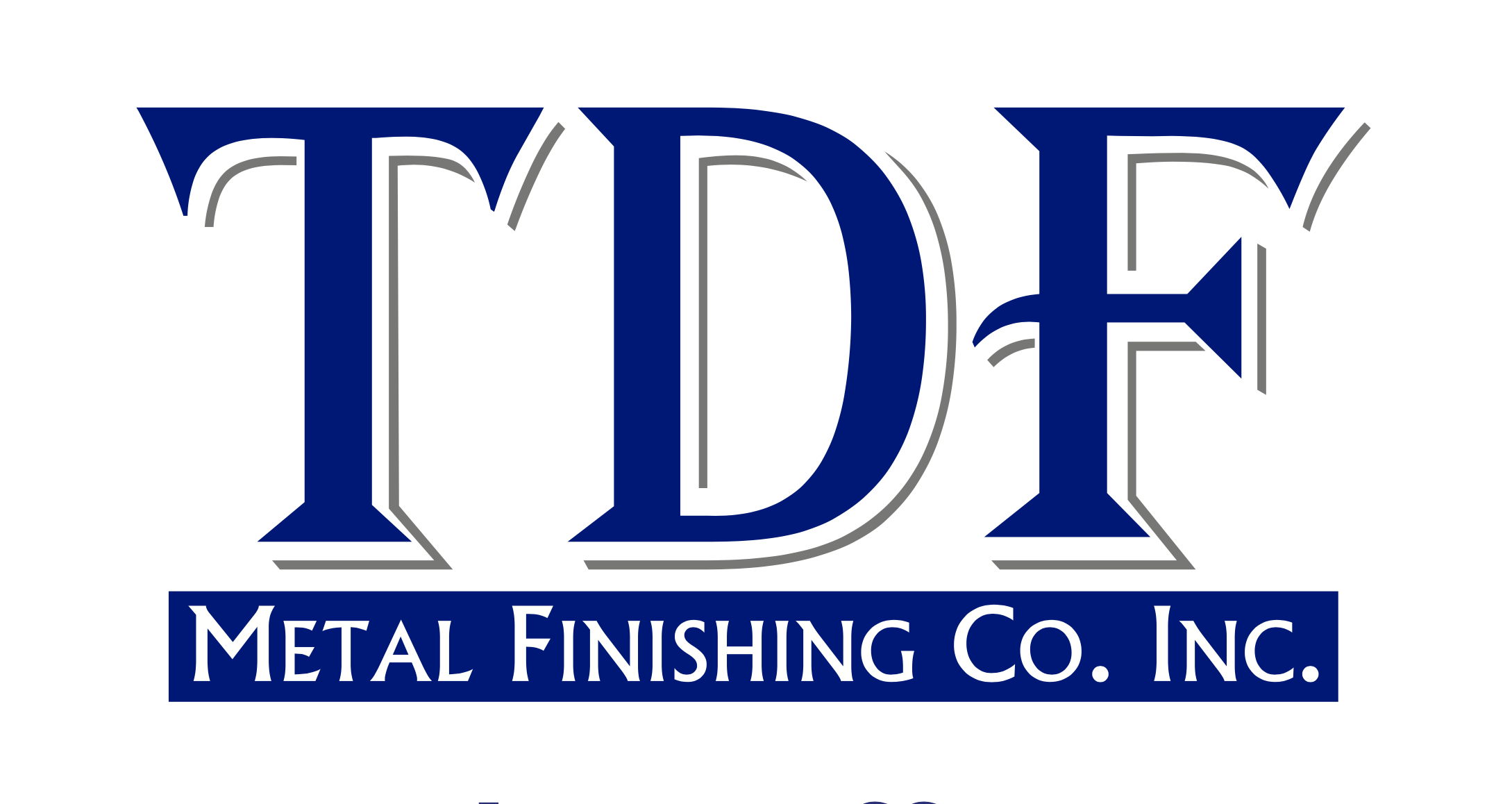TDF Offers
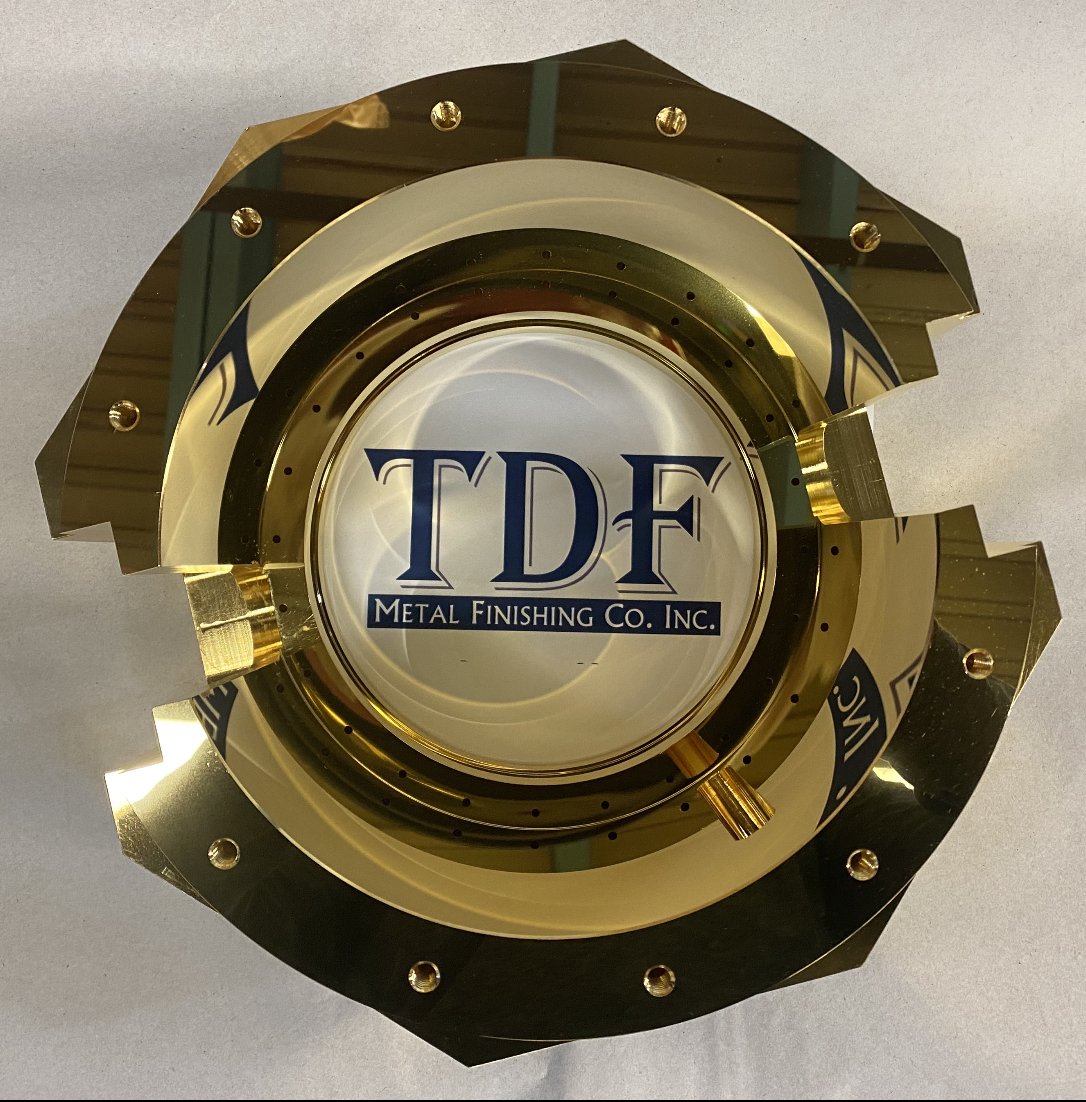
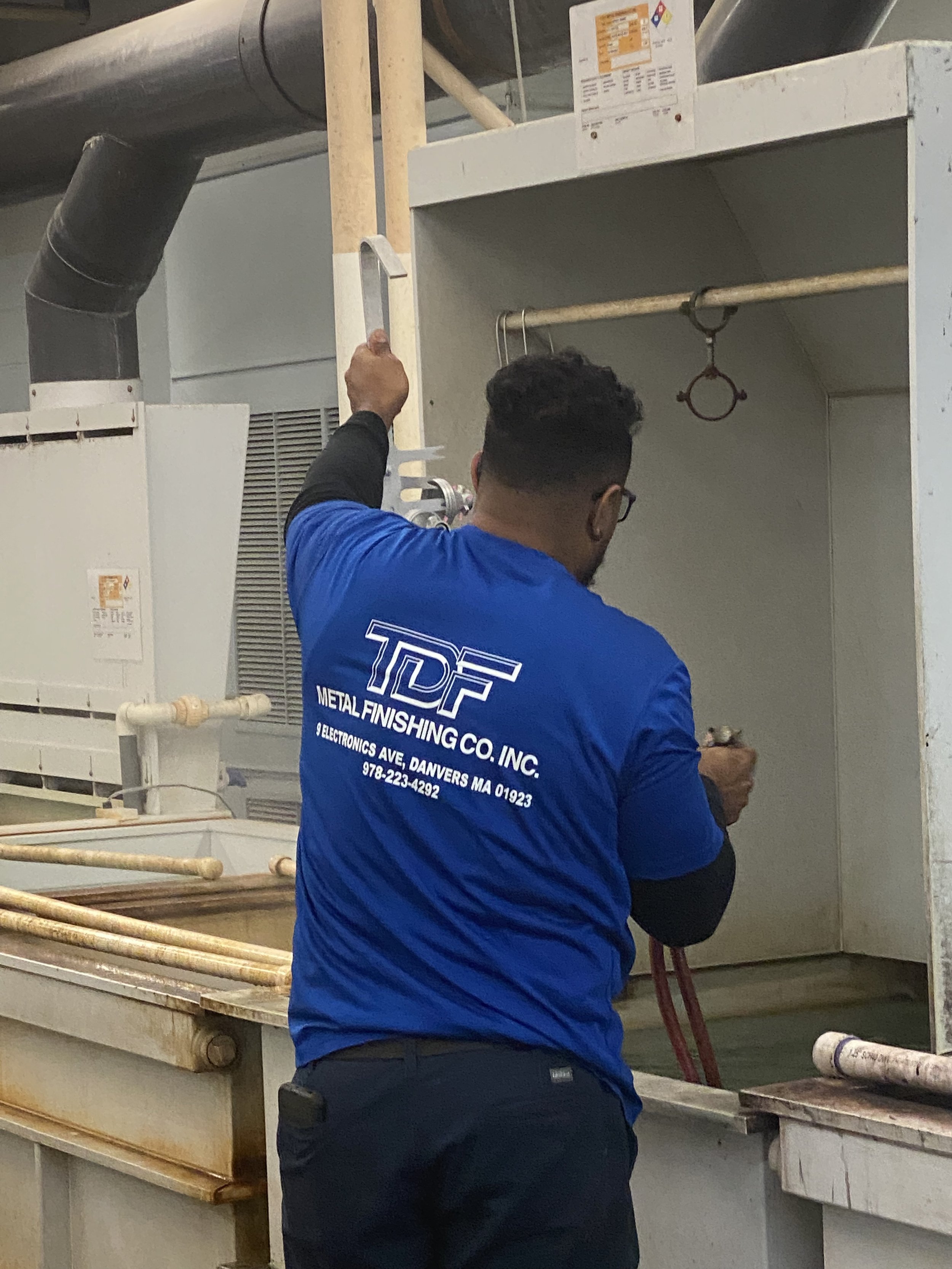
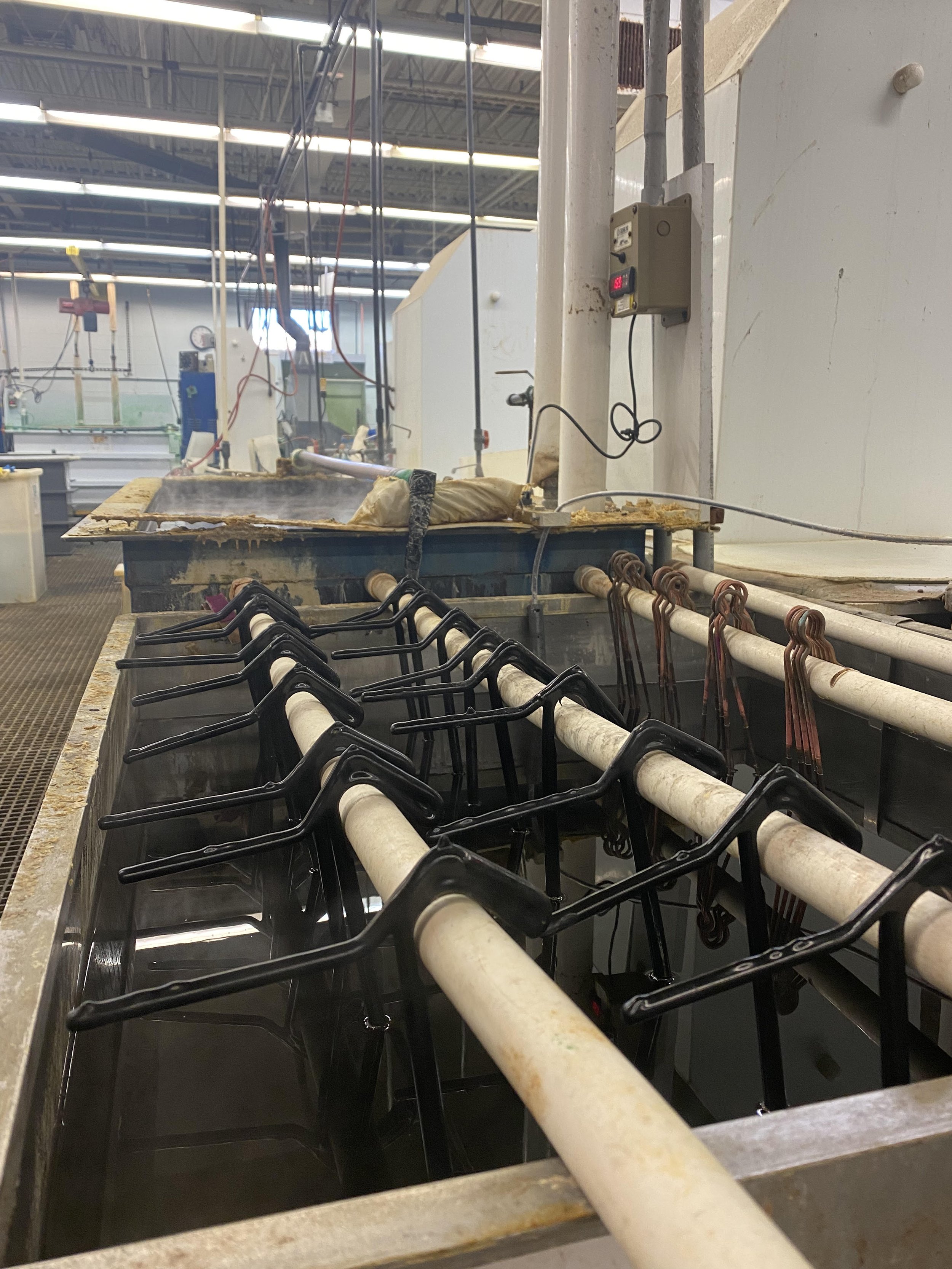
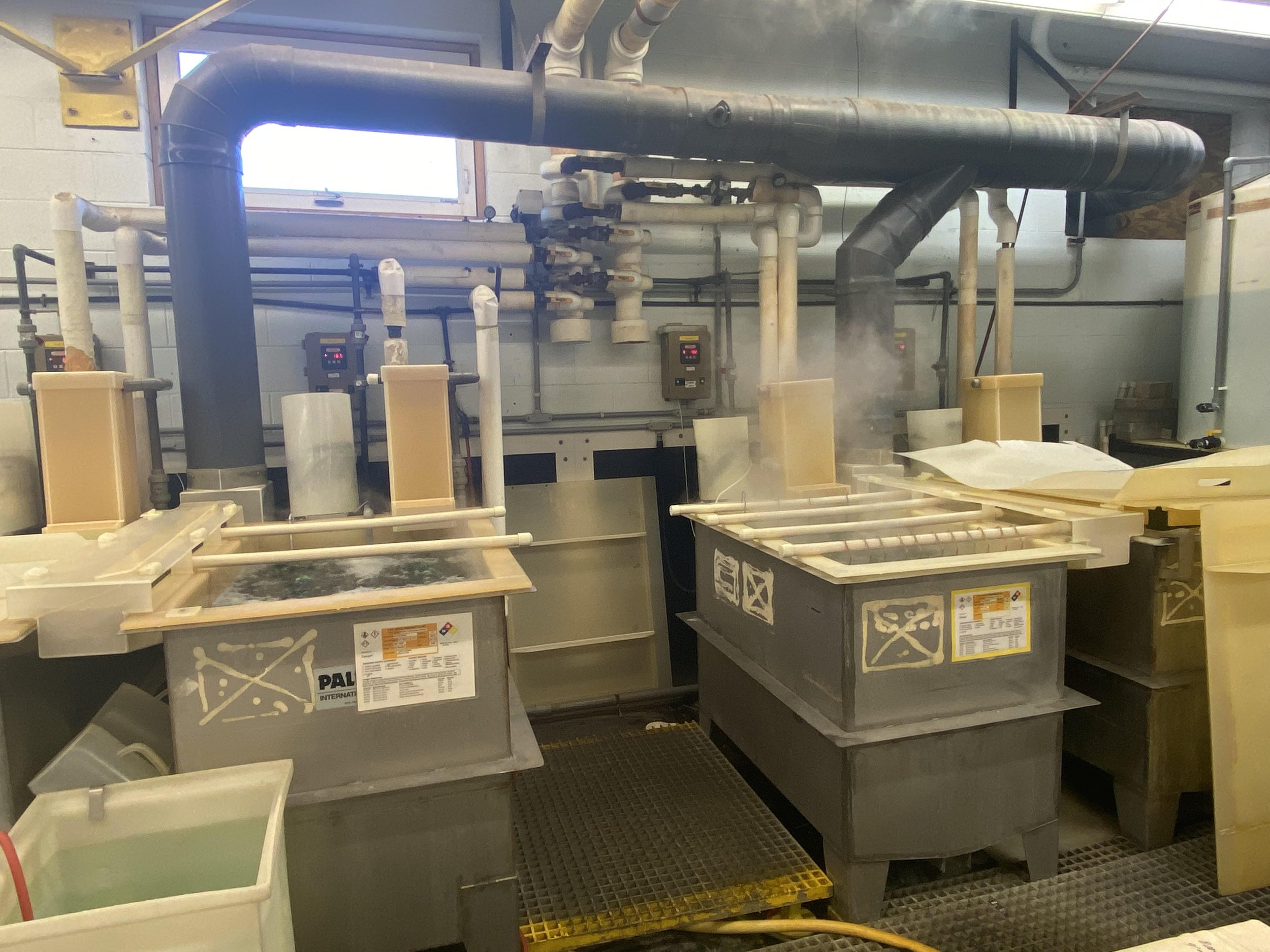
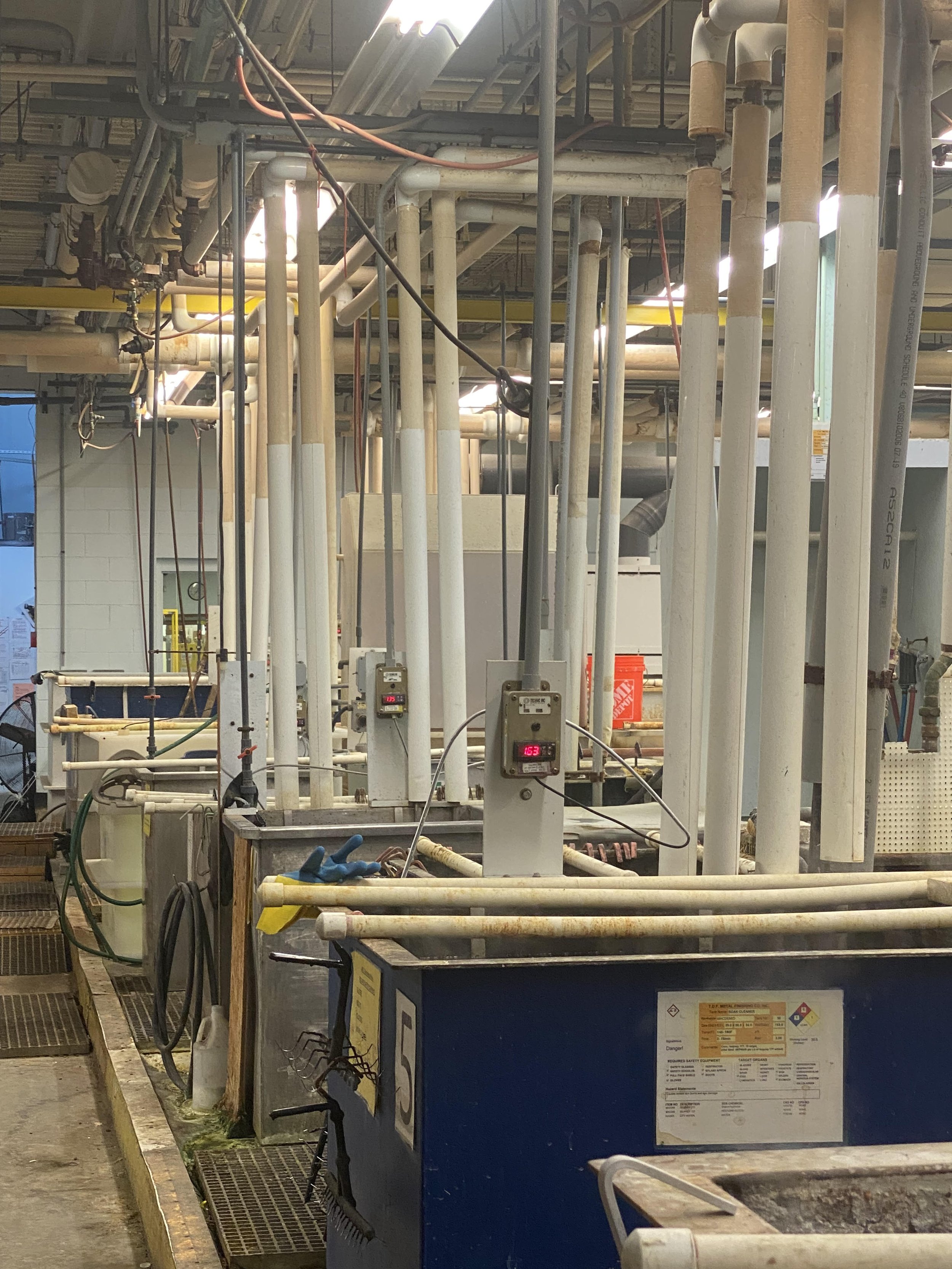
Processes offered and descriptions:
Anodizing (Red, Blue, Gray, Black, Gold, Green, Clear) - an electrochemical process that converts an aluminum surface to a coating of aluminum oxide. This coating can be transparent, making it suitable for dyeing a wide variety of colors for decorative or utilitarian purposes; or dull gray, for protection of hardware, nuts, bolts, and aircraft parts.
Coloring Anodized Aluminum - accomplished by immersing previously anodized aluminum in a desired color dye bath, which closes the microscopic pores in the colored coating. A wide variety of colors give this finish broad appeal as a decorative finish for giftware, jewelry, automotive and appliance trim, and exterior architecture.
Black Chemical Film - a uniform black corrosion retardant for copper. Coating has no resistance to abrasion.
Black Oxide - a uniform coating for ferrous metals; mostly a decorative coating. Very limited corrosion protection is provided. Black oxide coatings should be given a supplemental treatment of oil coating or other protective finish.
Black Passivating - a black oxide coating done on stainless steel.
Black Phosphate - a porous crystalline coating of zinc produced on ferrous metal surfaces by the reaction of the surface metal to the phosphate solution.
Bright Dipping - in this process, the part is immersed in a mixture of acids to provide a bright surface free of stains. It is possible that smoothing of the dipped surface may also result, depending on the type of the solution used and the initial nature of the surface.
Bright Nickel - a silver-white deposit used generally on industrial products for corrosion protection, and in the chemical and food processing industries to prevent iron contamination.
Bright Tin - a white, non-toxic, solderable, soft deposit useful for its resistance to corrosion and tarnish. Since tin is non-toxic, it is used as a coating on sheet steel used to manufacture "tin cans" as well as on food handling equipment.
Buffing - very little material is removed and the surface is improved using very fine abrasives.
Cadmium - a silver-white deposit used to minimize galvanic corrosion on parts or assemblies consisting of dissimilar metals such as brass and steel, and for its corrosion protection properties in certain harsh environments.
Caustic Etching - removal of oxide from aluminum in preparation of anodizing; cleaning of aluminum.
Chromating (Chemical Film) - chemical conversion coatings are intended to provide corrosion protection when left unpainted as well as to improve adhesion of paint finishes on aluminum and aluminum alloy metals. Colors can range from iridescent yellow to brown.
Copper - a reddish deposit used for plating through holes on circuit boards in the electronics industry, on steel wire used in making high-strength electric cable, and as a stop off to prevent case hardening on selected areas of iron and steel surfaces. All pennies made since 1981 are copper-plated zinc. Copper is also the first layer in "triple chrome" plating.
Electroless Nickel - provides better corrosion and chemical resistance, greater hardness, wear resistance and lubricity than electroplated nickel.
Electropolishing - an electrochemical process - the reverse of electroplating. Instead of coating or plating, electropolishing removes metal from the surface, leaving a very smooth, clean, bright finish. Electropolishing is most often performed on stainless steel, but can also be performed on aluminum and copper alloys. It provides a surface that is less porous, allowing for reliable sterilization in the medical and food industries.
Gold - a yellow deposit heavily relied upon in the electronics industry to provide long-term, dependable electrical contact, solderability, temperature resistance and corrosion protection in all kinds of devices including telephones, pagers, cellular phones, printed circuit boards, televisions, satellites, rockets. Gold is also a common deposit on jewelry, pens, and optical products.
Passivate - the use of an acid solution to render the surface of stainless steel to a "passive" state that enhances its corrosion resistance.
Pickling - acid treatment to chemical remove scale from metal surface. A number of acids and acid salts are used, and the operating temperature depends on the material treated. Pickling can also be done electrolytically. For stainless steels, cathodic pickling is carried out. For removal of the last stages of smut from high-carbon steels, anodic pickling is required.
Rhodium - employed in jewelry and silverware for decorative applications, because rhodium confers a brilliant and tarnish-resistant finish. It is used on reflectors because of its high reflectivity (78% with respect to silver) and tarnish resistance. It is used in electronics on contacts to provide electrically and chemically stable surfaces which are resistant to wear.
Salt Spray Corrosion Testing - is an accelerated corrosion test of the impact of salt spray on various metal finishes.
Sandblasting - cleaning the surface of a part with non abrasive blasting media such as glass beads, crushed thermoplastic, walnut shells, poly pellets, or metal media, or, with abrasive blasting media such as aluminum oxide, silicon carbide, garnet, or zircon.
Silver - used on tableware and hollowware because of its resistance to foods, as well as in jewelry. Functional uses include preventing galling or seizing of metal surfaces under high loads, such as on bearings, threads on stainless steel bolts, and on titanium compressor blades. It is also used in the electrical and electronics industries because of its outstanding conductivity.
Vapor Blasting - "blasting" a water and abrasive mixture through a blasting gun at a part for rapid finishing and burr removal on part surfaces.
X-Ray Fluorescent Thickness Testing - test used to take thickness measurements for several different finish layers on various materials.
Zinc - a bluish-white deposit which serves as an inexpensive decorative and sacrificial protective coating against atmospheric corrosion of iron and steel parts. It is commonly used on nuts, bolts, wire goods, fasteners, stampings, and sheet metal parts.
